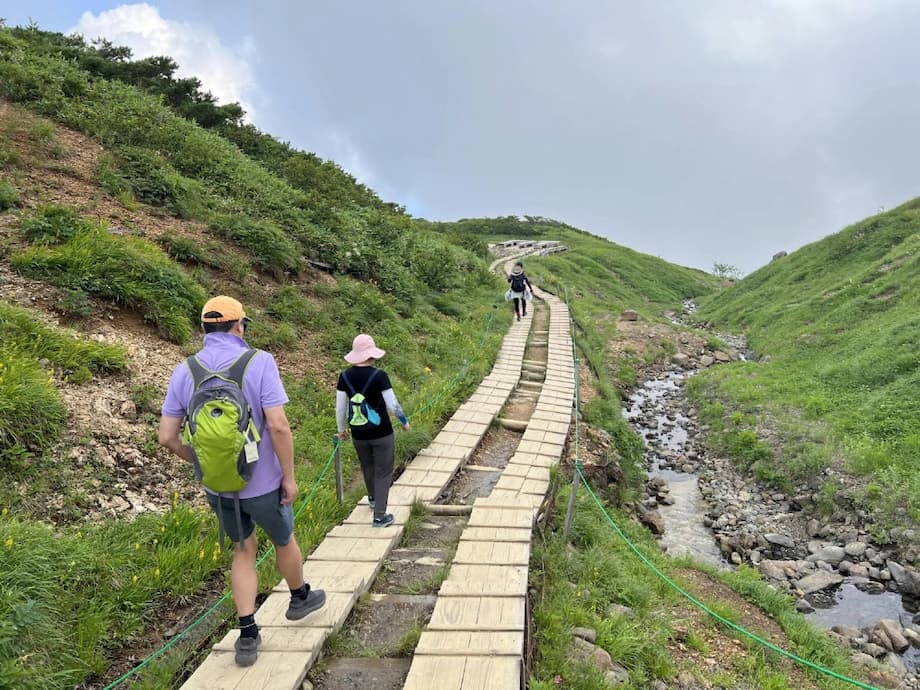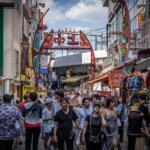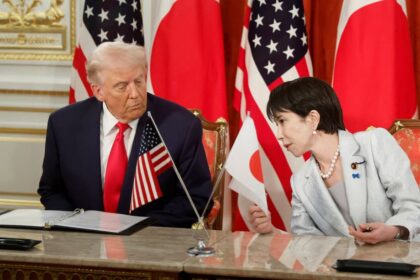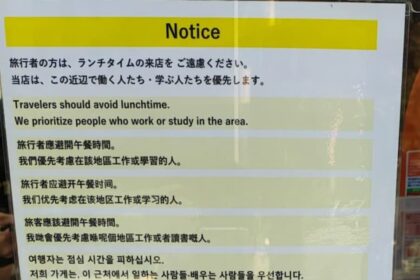Japan’s Coolcation Boom: How Climate Change Is Reshaping Summer Tourism
As Japan endures another record-breaking summer of heat and humidity, a new trend is quietly transforming the nation’s tourism industry. Once known for its vibrant cherry blossoms and powdery ski slopes, Japan is now seeing a surge in demand for “coolcations”—vacations to cooler, higher-altitude destinations—as both locals and international visitors seek relief from the sweltering weather. This shift is not unique to Japan, but the country’s response offers a revealing look at how climate change is rewriting the rules of travel.
- Japan’s Coolcation Boom: How Climate Change Is Reshaping Summer Tourism
- Why Are Tourists Fleeing the Heat?
- Japan’s Coolcation Destinations: From Ski Resorts to Summer Havens
- Is the Coolcation Trend Enough to Save Summer Tourism?
- Urban Innovation: How Cities Are Adapting to the Heat
- Can Marketing Alone Drive the Coolcation Boom?
- Global Context: Japan’s Coolcation Trend in Perspective
- In Summary
Why Are Tourists Fleeing the Heat?
In recent years, Japan’s summers have become increasingly punishing. Cities like Tokyo and Osaka routinely record temperatures above 35°C (95°F), with humidity levels that make outdoor activities uncomfortable and, at times, dangerous. The Japan Meteorological Agency has reported a steady rise in average summer temperatures, and the frequency of heatwaves has increased dramatically. This is not just a matter of discomfort: heatstroke-related deaths have risen, and the government regularly issues warnings to stay indoors during the hottest parts of the day.
Globally, the story is similar. Record heat waves, wildfires, and oppressive humidity are transforming tourism patterns. Iconic attractions such as the Acropolis in Athens and the Eiffel Tower in Paris have been forced to close during extreme heat, while theme parks from Tokyo Disney Resort to Six Flags in the United States have seen visitor numbers plummet due to soaring temperatures. According to a European Commission study, northern coastal regions in Europe are expected to see a tourism increase of over 5% during summer and early autumn, while southern regions may lose nearly 10% of their summer tourists.
This climate-driven migration is fueling the rise of the “coolcation”—a portmanteau of “cool” and “vacation”—as travelers seek out destinations with milder climates, often at higher altitudes or in northern latitudes.
Japan’s Coolcation Destinations: From Ski Resorts to Summer Havens
For generations, the Japanese have practiced hisho, or heat-escape travel, retreating to mountain resorts like Karuizawa, Yatsugatake, and Kamikochi to escape the oppressive summer heat. Traditionally, these destinations attracted wealthy families and foreign residents, but in recent years, they have become increasingly popular with the broader public.
What’s new is the intensity of the marketing push and the urgency behind it. As climate change makes urban summers ever more unbearable, businesses are aggressively promoting cooler destinations as a prime attraction. Ski resorts, once dormant in the off-season, are reinventing themselves as year-round playgrounds. In Hakuba, Nagano Prefecture, for example, the Happo-One ski resort now welcomes hikers, mountain bikers, and paddleboarders during the summer months. Staff at mountaintop restaurants serve adventure-seeking guests who come for the crisp air and panoramic views, even as many ski lifts remain idle.
JR East, one of Japan’s largest railway operators, has partnered with Weathernews to launch a sweeping “hisho tabi” (heat-escape travel) campaign. Eye-catching posters in Tokyo’s train stations highlight destinations where August highs are a full 10°C cooler than the capital, such as Washikura in Fukushima (23.1°C), Sukayu in Aomori (23.4°C), and Kusatsu in Gunma (25.2°C). The Hoshino Resort group, meanwhile, is promoting “coolcation” stays at hotels 800 meters above sea level or higher, where daytime temperatures in July and August rarely exceed 25°C.
Even Sapporo, on the northern island of Hokkaido, is leveraging its reputation for cool summers. The city uses snow collected during winter to cool public buildings in summer, and its famous Ice Festival has been adapted for warmer months, allowing visitors to experience winter attractions year-round. These efforts are part of a broader trend: cities and resorts across Japan are racing to offer new activities and amenities to attract heat-weary travelers.
Expanding the Summer Menu: Activities and Experiences
The diversification of summer activities is central to the coolcation strategy. Resorts that once lived only for the ski season now offer mountain biking, hiking, standup paddleboarding on alpine lakes, and even yoga retreats. Some travelers who previously flocked to beaches are now choosing mountain lakes and rivers, seeking both cooler temperatures and quieter surroundings.
Tour operators are also adapting. In Kyoto, where summer humidity can be stifling, guides now recommend early morning or evening tours to avoid the hottest parts of the day. In Nasushiobara, a traditional hisho destination, officials are experimenting with new campaigns to draw visitors, though commercial areas still struggle with high temperatures and declining foot traffic during heatwaves.
Is the Coolcation Trend Enough to Save Summer Tourism?
Despite the flurry of marketing and new offerings, the coolcation boom faces significant challenges. A recent survey by Tokyo-based research firm Intage found that 38% of respondents planned to stay home this summer, with many citing the heat as a major deterrent to travel. Outdoor activities such as camping, barbecuing, and theme park visits have declined, and economic factors like the weak yen and inflation are also weighing on travel plans.
Even traditionally cool refuges like Hakuba, Nasu, and Hokkaido are not immune to the effects of climate change. Recent heatwaves have pushed temperatures in these areas into the mid to high 30s°C, blurring the distinction between “cool” and “hot” destinations. As one visitor from New Zealand remarked while hiking in Hakuba, the area’s beauty and relative comfort are appealing, but the unpredictability of the weather remains a concern.
Japan’s ski resorts, in particular, are feeling the pressure. The number of visitors has declined significantly since the 1990s, and while inbound tourism has helped some areas, others struggle with aging infrastructure and labor shortages. The snow season is becoming shorter and less predictable, making it imperative for operators to boost summer business if they hope to survive.
The Role of Inbound Tourism
International tourists are seen as a key to sustaining demand. Unlike domestic travelers, who often take short trips, inbound visitors tend to stay longer and spend more. The Japanese government and local tourism boards are working to attract overseas tourists to coolcation destinations, highlighting not just the climate but also unique cultural and natural experiences.
However, the competition is fierce. Globally, destinations from Norway and Iceland to Harbin in northern China are marketing themselves as coolcation hotspots. Harbin, for example, uses snow-making technology to create artificial snow parks in summer, while Abu Dhabi’s Masdar City combines ancient wind towers with solar energy to create cooler microclimates. Copenhagen rewards climate-friendly tourists and has developed parks and public spaces as cooling hubs, while Paris has created over 800 “cool islands” and reopened swimming in the Seine.
Urban Innovation: How Cities Are Adapting to the Heat
Japan is not alone in its efforts to adapt to a warming world. Cities around the globe are experimenting with innovative solutions to help residents and tourists beat the heat. In Sapporo, stored snow is used to cool public spaces, while Singapore’s Supertrees act as vertical gardens and cooling towers. Phoenix, Arizona, has coated streets with reflective materials to lower temperatures and offers nighttime activities to avoid the worst of the heat.
These urban innovations are not just about comfort—they are a matter of survival. As the World Economic Forum notes, the increase in global temperatures has led to a significant rise in heatstroke-related deaths in Japan. New technologies, such as heat-releasing clothing and ultraviolet-blocking parasols, are being developed to mitigate the effects of extreme heat on people and crops.
Sustainability and the Future of Travel
The coolcation trend is closely tied to broader movements in wellness and sustainability. Travelers increasingly see cooler destinations as healthier, more comfortable, and less exhausting—especially for families with children or older people. Eco-friendly initiatives, such as the CopenPay program in Copenhagen or the use of renewable energy in Masdar City, are becoming selling points for climate-conscious tourists.
In Japan, the challenge is to balance the need for economic recovery in the tourism sector with the imperative to reduce carbon emissions and protect fragile mountain environments. As more visitors flock to highland resorts, concerns about overtourism, waste management, and the preservation of natural habitats are coming to the fore.
Can Marketing Alone Drive the Coolcation Boom?
While aggressive marketing campaigns have raised awareness of coolcation destinations, experts caution that simply offering lower temperatures is not enough. Travelers are looking for extra value—unique experiences, high-quality accommodations, and opportunities to connect with nature and local culture. As one industry insider put it,
“Marketing alone is not enough to attract visitors; offering extra value is necessary to draw people to these destinations.”
Surveys suggest that, in the absence of extreme heat, more people would visit theme parks or attend major events like the Osaka Expo. This points to missed opportunities for the tourism industry, which must find ways to make coolcation destinations appealing even when the weather is less severe.
Global Context: Japan’s Coolcation Trend in Perspective
Japan’s embrace of the coolcation trend mirrors developments worldwide. In Europe, northern countries like Norway, Denmark, and Sweden are seeing a surge in tourist activity, while southern regions face declines. In Asia, cities like Harbin and Singapore are investing in urban cooling solutions, and in North America, destinations like Alaska and Canada are gaining popularity among travelers fleeing the heat.
What sets Japan apart is the combination of tradition and innovation. The practice of hisho has deep cultural roots, but the current wave of adaptation is driven by necessity. As climate change accelerates, the tourism industry must continue to evolve, offering not just respite from the heat but also meaningful, sustainable experiences.
In Summary
- Japan is experiencing a surge in demand for “coolcations” as travelers seek relief from record summer heat and humidity.
- Traditional ski resorts and mountain destinations are reinventing themselves as year-round havens, offering hiking, biking, and water sports.
- Marketing campaigns by companies like JR East and Hoshino Resort are promoting high-altitude escapes, but economic and climate challenges remain.
- Even traditionally cool areas like Hokkaido and Hakuba are experiencing higher temperatures due to climate change.
- International tourists are key to sustaining demand, but Japan faces competition from other global coolcation hotspots.
- Urban innovation and sustainability are central to the future of tourism, with cities worldwide adopting new technologies to beat the heat.
- Experts warn that marketing alone is not enough; destinations must offer unique experiences and added value to attract visitors.












